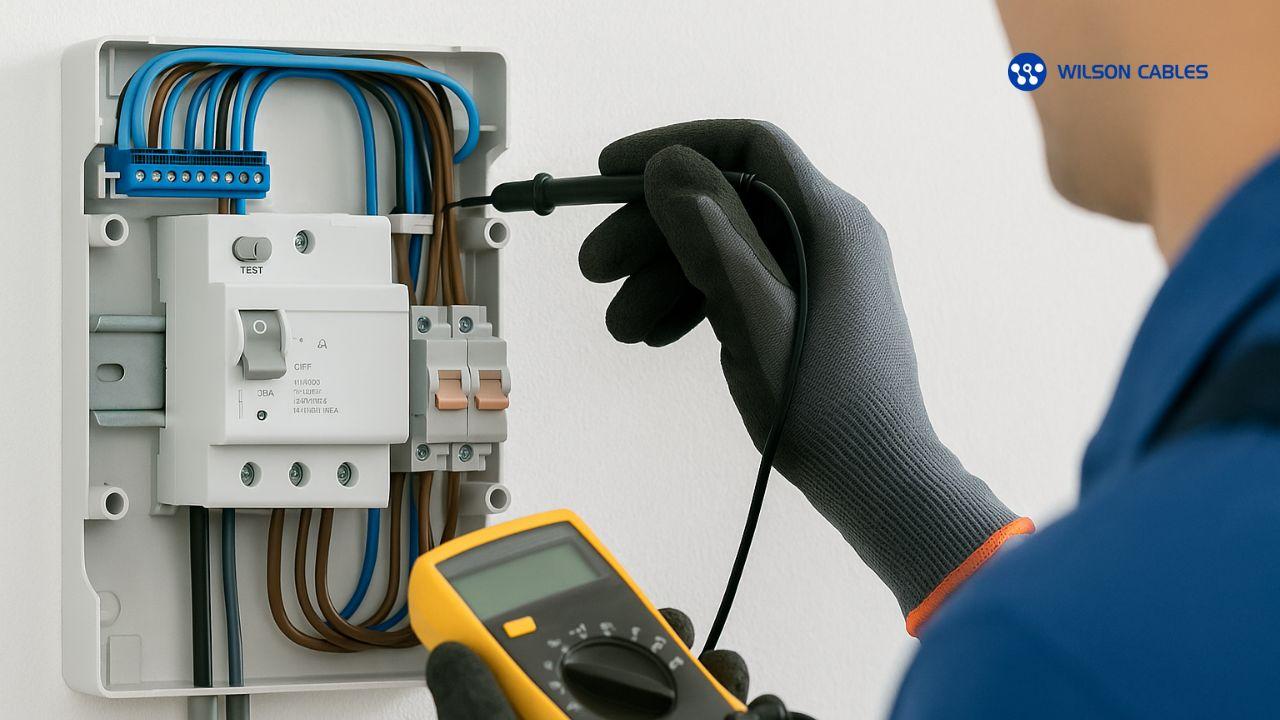
The safety of electrical installations in homes and buildings is something that should not be overlooked. Small errors in installation or damage to electrical components can pose a major risk. One such risk is electrical leakage, which can cause short circuits, fires, and even dangerous electric shocks that can compromise safety.
In addition to being dangerous, electrical leakage can also cause your electricity bill to skyrocket without you realizing it because the current is flowing to places it shouldn't. This article will discuss what electrical leakage is, its causes, signs, and how to fix it so you can protect your home and family from danger.
An electrical leak is a condition where electrical current flows out of its intended conductor and into other media such as walls, floors, or the body of electronic equipment. This usually occurs due to damaged cable insulation, loose connections, or damaged equipment.
If left unchecked, electrical leakage can cause short circuits, fires, electric shocks, and damage to electronic equipment. Therefore, detection and repair must be carried out immediately.
There are several common factors that cause electrical leaks. Here are some of them:
Installations that do not meet PUIL (General Electrical Installation Requirements) standards or are carried out by inexperienced individuals can result in loose connections, improper use of cables, and potential current leaks.
Over time, electrical cable insulation can fray due to age, rodent bites, or friction from surrounding objects. These exposed cables can conduct electrical current outside of their intended path.
Electrical appliances such as irons, washing machines, or refrigerators that have internal damage can cause current leakage to the body of the appliance, which is dangerous if touched.
Water is an electrical conductor. If the electrical installation is in a damp area or exposed to water seepage, the risk of current leakage is even higher.
Grounding serves to safely divert leakage current to the ground. If grounding is not installed properly, leakage current will not be diverted, endangering the occupants of the house.
How can you recognize electrical leakage? Here are some signs to watch out for:
If you suspect an electrical leak, perform the following simple checks:
Touch the test pen to the body of the equipment or wall near the cable line. If the test pen light turns on, there is likely a current leak.
A clamp meter can measure electrical current in a cable without disconnecting it. If current is flowing even when the equipment is turned off, there is a leak.
Unplug all electrical devices, then turn them back on one by one. If the MCB trips after one of the devices is turned on, it means that device has a current leak.
Cables that feel hot even when not in use indicate that current is flowing continuously, which could be an indication of an electrical leak.
If an electrical leak is detected, take the following steps immediately:
Safety is the top priority. Be sure to turn off the MCB or power source before checking or repairing.
Cables with damaged insulation must be replaced immediately with new cables that meet SNI standards to prevent recurring leaks.
Check the grounding to ensure that leakage current can be safely diverted to the ground. If there is no grounding, install it immediately according to electrical standards.
An ELCB is a safety device that can detect leakage currents and immediately cut off the power supply to prevent electric shock and fire hazards.
If you are unsure about performing repairs yourself, contact an experienced electrician as soon as possible to get the problem fixed safely and properly.
Electrical leakage is a serious problem that must be addressed immediately to prevent fires, short circuits, and financial losses. Perform regular inspections, repair damaged cables, ensure optimal grounding, and use safety devices such as ELCBs.
Additionally, always use high-quality cables for electrical installations to ensure safety and durability. Choose Wilson Cables as your high-quality electrical cables, meeting SNI standards to guarantee the safety and performance of your installations. The risk of electrical leakage can be minimized with the right cables.